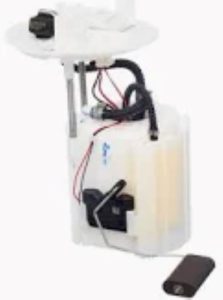Diagnosis of a fuel pump relay involves a number of steps, normally to safely feed power to the fuel pump and maintain the pressure between 30 and 80 PSI for most engines. Normally, a visual examination is made on the general appearance of the relay, observing any wear, discoloration, or corrosion on the terminals because these might increase electrical resistance and impede the flow of power through it. Generally, too much resistance decreases the efficiency of a relay by as high as 20% and leads to intermittent fuel delivery problems.
Using a multimeter, voltage and continuity of the relay are checked to ensure it is functioning correctly. By setting the multimeter to voltage, technicians will hook it up to the terminals of the relay while turning on the ignition. If the reading shows approximately 12 volts, it signifies that the relay is providing sufficient power. A low reading indicates relay wear or a possible fault; since the fuel pump requires constant power to operate with full efficiency, a faulty relay cannot provide it. The multimeter informs of continuity-that is, whether electricity passes through the relay without hindrance-in continuity testing; at times, a lack of continuity signals internal damage, which means replacement is necessary.

Other simpler ways include listening for a "click" upon turning the ignition on. A good relay will click when it engages, emitting a sound that tells you it is acting to feed voltage to the fuel pump. If no noise occurs, then something may be wrong with the relay-it could be jammed or faulty, in which case you might need to replace it. TROUBLESHOOTING TIP You can also test the problem by exchanging the suspected relay with an identical one used in another system, such as the horn. If the fuel pump starts working upon using the replacement relay, then you can suspect that the original relay was the problem.
Additional insight, particularly with high-performance vehicles, is to test the relay for amperage draw. Most fuel pump relays usually control about 10 to 15 amps; anything higher indicates overburdening of the relay or that a wiring problem exists that might account for the relay failure. Routine maintenance at given intervals of 5-10 years gets rid of fuel delivery problems and thus is a complement to the Fuel Pump, meant for continual fuel supply to the engine.
